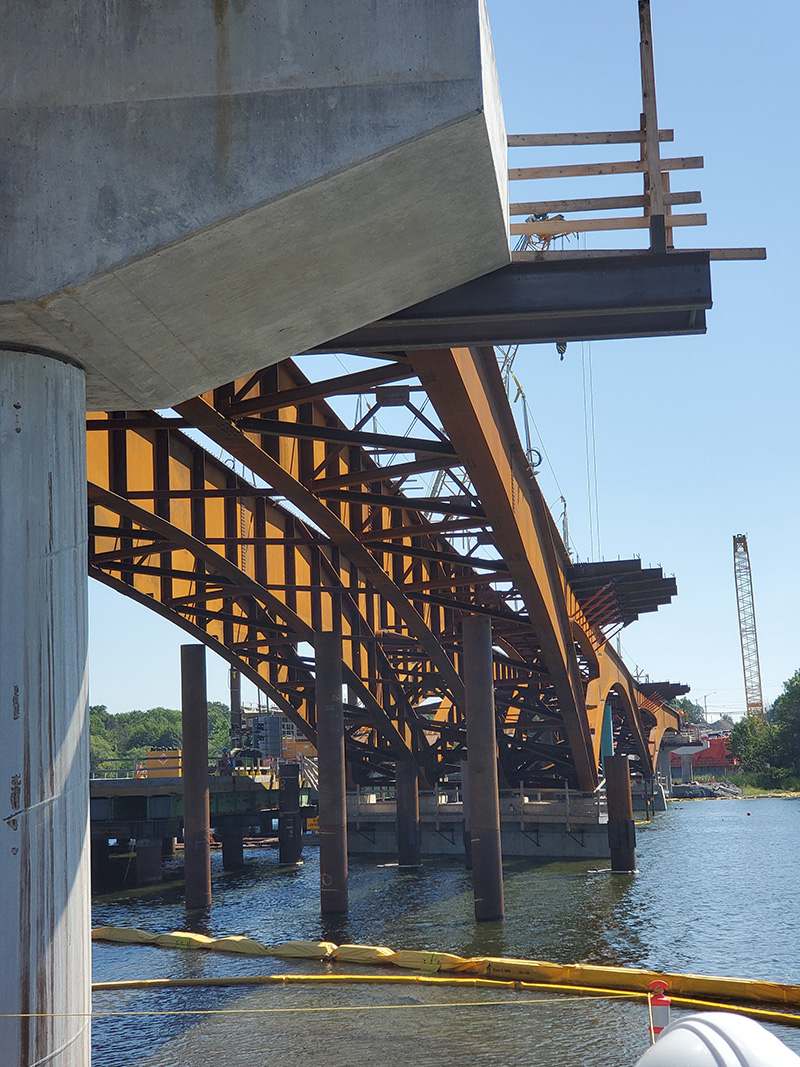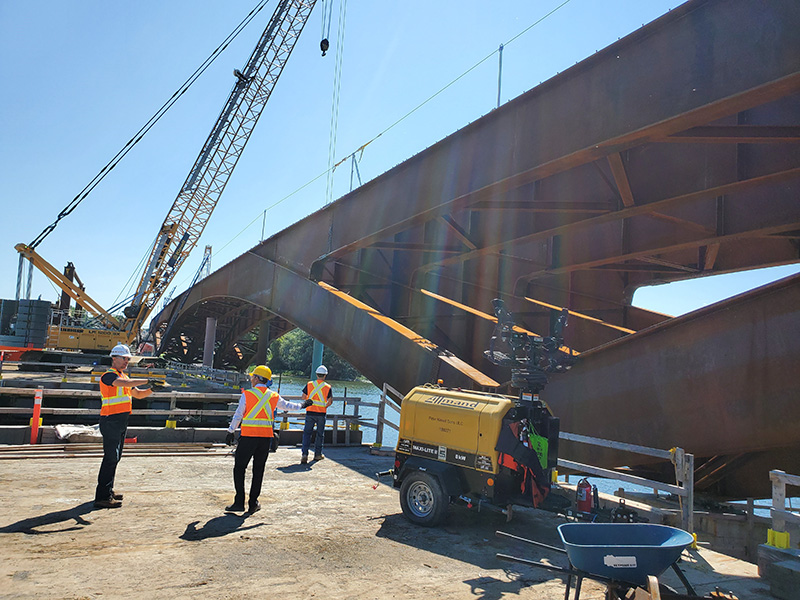Queen’s Engineering researchers and students are partnering with the city of Kingston to build the region’s first “smart bridge,” with autonomous technology monitoring the structure’s health.
Featuring sensors, robotics, and even artificial intelligence (AI), technology that was not available during the ideation phase of the project in the 1960s, researchers and students of Queen’s Ingenuity Labs Research Institute are working to ensure Kingston’s new Third Crossing bridge operates efficiently upon opening and for years to come.
“The city had plans for a long time for this to be a ‘smart bridge,’” says Dr. Josh Woods, an Assistant Professor in the Department of Civil Engineering, “using innovative technologies to assess and understand its behaviour.” Ingenuity Labs is uniquely designed for such real world, real time challenges. A collaborative research initiative which opened in 2019, it is focused on creating intelligent systems and robotic machines that enhance human productivity, safety, performance, and quality of life.
The construction of the Third Crossing has become a lodestone for past and present Queen’s engineers. Two alumni — Deputy Commissioner Mark Van Buren, Sc’92, PhD’99, and Projects Engineer Dan Franco, Sc’02 — are leading the project team at the City of Kingston. Dean Kevin Deluzio and Associate Dean (Research) Amir Fam met with Van Buren and Franco recently on a tour of the construction site and witnessed engineering design principles that they teach in action.
“Even within Ontario you don't build things like this every year,” says Dr. Fam. “This is a project of national scale.”

The Third Crossing development proved the perfect opportunity for a partnership between Ingenuity Labs and the City of Kingston. Dr. Woods describes their efforts as technology development, where the end goal is to help the city monitor the bridge. “The goal of Ingenuity Labs is to put all of our knowledge together to solve some big problems, and this is definitely a great example of that,” he says.
The lab’s research is divided into two themes. The first theme involves the development of a wireless sensor network to monitor how bridge bearings and expansion joints accommodate the tensions of concrete as it expands and contracts with the seasons. The second theme is the development of robotic unmanned aerial vehicles (UAV) that will fly around the bridge and take photos to look for any deterioration.
But the real challenge comes after the data has been collected.
“That’s where the major novelty is in this particular project because that’s where the challenge is in the field,” says Dr. Woods. “We can install sensors, sure. We can collect gigs and gigs and gigs of data, but who’s looking at the data and what are we doing with it?”
To process the heaps of data, the team at Ingenuity Labs is working on AI that can analyze the UAV’s photos for any signs that could point to weakening infrastructure, and which would signal a technician to investigate the findings.

For the researchers, the Third Crossing project has provided a rare opportunity to give their students a real, physical task and a chance to put their research into action.
“You can do lab testing and make sure the sensor works,” says Dr. Woods, “but actually saying, ‘OK, now go and install it on the Third Crossing Bridge?’ It’s a really cool project.”
Dr. Woods and Dr. Neil Hoult, a Professor and Associate Head of the Department of Civil Engineering, oversee the project and work in both themes. Rounding out the research team are Dr. Xiaodan Zhu (Electrical and Computer Engineering), Dr. Sidney Givigi (School of Computing) and Dr. Brian Surgenor (Mechanical and Materials Engineering), all working on Theme 2. The students involved in the project include Isabel Heykoop and Liam Horton at the graduate level, undergraduates Dylan Neves and Emily Bugeja, and post-doctoral fellow Heshan Fernando.
For Dr. Woods, the end goal is that their research proves so valuable, and easy enough to use, that city officials adopt the technologies long-term. While it is unlikely there will be major bridge deterioration in the near future, the autonomous monitoring should be able to catch any issues further down the line.
“We’re in the business of developing the technology and then putting it in the hands of the people who will use it.”